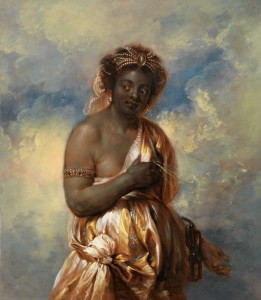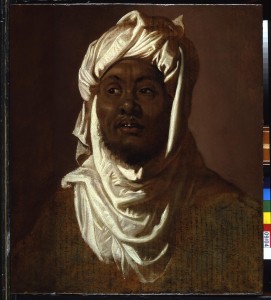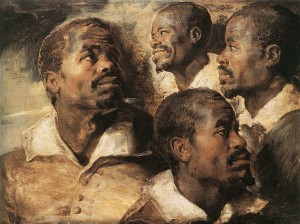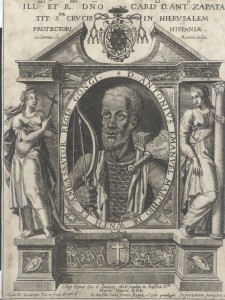Largely through the missionary efforts of the day, early modern Europeans had quite extensive awareness of a much wider world. I stress the religious context because even some of the political and diplomatic contacts with distant realms owed much to missionary efforts, with Jesuits much in prominence as intermediaries.
Some recent art exhibits have provided important and surprising evidence for such interactions. I won’t describe them in detail, as you can easily find information on the Internet, but a couple of highlights do call for notice. Although I have mainly been posting about Europe, one of the great recent shows (last year, at Baltimore’s Walters Museum) concerned the African Presence in Renaissance Europe.
A lot of the images can be found online.
I quote from a New York Times review by Holland Cotter:
By the mid-1400s an expansionist Europe was hungry for new materials and markets, and a globally minded Roman Catholic Church sought new members. Well before Vasco da Gama first sailed around Africa, Portuguese merchants had opened trading depots along its west coast. And enterprising Africans were coming to Europe. In 1484 a Congolese delegation visited Lisbon on a diplomatic mission, and Ethiopian Christian pilgrims were establishing permanent communities in Rome. Superficially Africa and Europe had embarked on an age of cosmopolitan rapport, an idea promoted in art. It was during this period that the convention was introduced of including a black African as one of the three foreign kings in images of the Adoration of the Magi. A beautiful early-16th-century Flemish example and one with, exceptionally, two black figures, tenderly particularized, opens the Walters show on a utopian note, with a vision of multicultural harmony.
Some of the faces depicted here were slaves or freedmen, but others were voluntary migrants, or important visitors in their own right.
In light of my remarks on Rubens’s work, it is deeply impressive to see his African faces.
Some of these visitors came from Christian lands, especially the Kongo. This is “Don Antonio Manuele de Funta, Ambassador of the King of the Congo to the Pope” (1608).
Seventeenth century Europeans had plenty of opportunities to know about the wider Christian world.

















